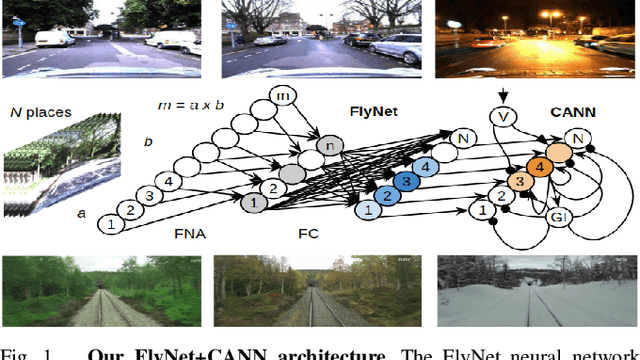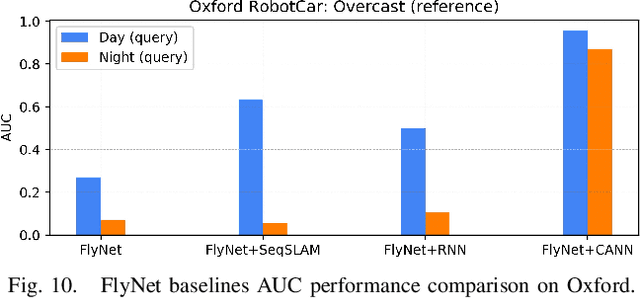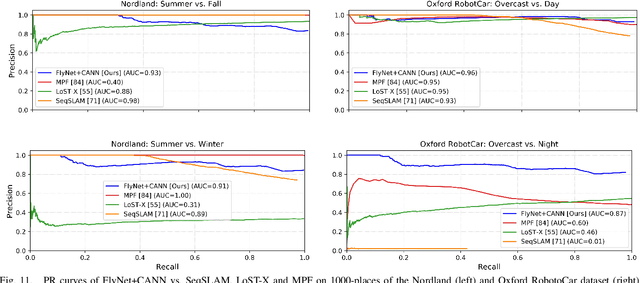A Compact Neural Architecture for Visual Place Recognition
Paper and Code
Oct 15, 2019



State-of-the-art algorithms for visual place recognition can be broadly split into two categories: computationally expensive deep-learning/image retrieval based techniques with minimal biological plausibility, and computationally cheap, biologically inspired models that yield poor performance in real-world environments. In this paper we present a new compact and high-performing system that bridges this divide for the first time. Our approach comprises two key components: FlyNet, a compact, sparse two-layer neural network inspired by fruit fly brain architectures, and a one-dimensional continuous attractor neural network (CANN). Our FlyNet+CANN network combines the compact pattern recognition capabilities of the FlyNet model with the powerful temporal filtering capabilities of an equally compact CANN, replicating entirely in a neural network implementation the functionality that yields high performance in algorithmic localization approaches like SeqSLAM. We evaluate our approach and compare it to three state-of-the-art methods on two benchmark real-world datasets with small viewpoint changes and extreme appearance variations including different times of day (afternoon to night) where it achieves an AUC performance of 87%, compared to 60% for Multi-Process Fusion, 46% for LoST-X and 1% for SeqSLAM, while being 6.5, 310, and 1.5 times faster respectively.
 Add to Chrome
Add to Chrome Add to Firefox
Add to Firefox Add to Edge
Add to Edge